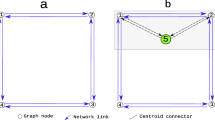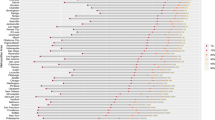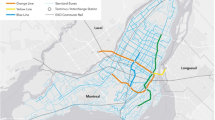Abstract
In transit modeling, access and egress conditions are often overlooked. The most common modeling technique of these conditions relies on the use of centroid connectors. This definition often uses the geographic position of zone centroids and sets constraints on the maximum number and length of connectors. This definition is subject to spatial aggregation issues and has already been proven to bias car assignment outcomes. The impact on transit assignment outcomes has not yet been demonstrated. The current paper investigates the statistical impact of connectors on transit assignment outcomes in an urban model of Lyon in France. Findings suggest that transit ridership, total passenger-kilometers and transit transfers are dependent on the definition of centroid connectors. Setting arbitrary values for the maximum number and length of connectors statistically affects transit results. The pattern and magnitude of this impact vary, however, between transit modes. The bus and rapid bus systems have been shown to be more sensitive towards the definition of connectors than the subway and the light rail systems. These findings question, to a certain extent, the validity and reliability of transit modeling outcomes.








Similar content being viewed by others
Notes
In fact, the calibration of transportation models often relies on “fine-tuning” the definition of connectors. In our case, this practice would mask the impact of the definition of centroid connectors on assignment outcomes.
Onboard Travel Surveys were conducted by the local transit authority between 2012 and 2016.
A trip is considered here as a travel, journey or movement between an origin and a destination using a specific travel mode or a combination of modes.
The Gaussian form is derived from a Gaussian Kernel-density estimation (KDE) method.
For these zones, all their centroid connectors are drawn but not necessarily used. Travel demand is distributed between connectors that produce shortest travel strategies.
References
Abrantes PA, Wardman MR (2011) Meta-analysis of UK values of travel time: an update. Transp Res Part A Policy Pract 45:1–17. https://doi.org/10.1016/j.tra.2010.08.003
Alshalalfah B, Shalaby AS (2007) Case study: relationship of walk access distance to transit with service, travel, and personal characteristics. J Urban Plan Dev 133:114–118. https://doi.org/10.1061/(ASCE)0733-9488(2007)133:2(114)
Bell MG (2009) Hyperstar: a multi-path Astar algorithm for risk averse vehicle navigation. Transp Res Part B Methodol 43:97–107. https://doi.org/10.1016/j.trb.2008.05.010
Bollinger CR, Ihlanfeldt KR (1997) The impact of rapid rail transit on economic development: the case of Atlanta’s MARTA. J Urban Econ 42:179–204. https://doi.org/10.1006/juec.1996.2020
Brown MB, Forsythe AB (1974a) Robust tests for the equality of variances. J Am Stat Assoc 69:364–367. https://doi.org/10.1080/01621459.1974.10482955
Brown MB, Forsythe AB (1974b) The small sample behavior of some statistics which test the equality of several means. Technometrics 16:129–132. https://doi.org/10.1080/00401706.1974.10489158
Chang K-T, Khatib Z, Ou Y (2002) Effects of zoning structure and network detail on traffic demand modeling. Environ Plan B Plan Des 29:37–52. https://doi.org/10.1068/b2742
Chowdhury S, Zhai K, Khan A (2016) The effects of access and accessibility on public transport users’ attitudes. J Public Transp 19:97–113. https://doi.org/10.5038/2375-0901.19.1.7
Daniels R, Mulley C (2013) Explaining walking distance to public transport: the dominance of public transport supply. J Transp Land Use 6:5–20. https://doi.org/10.5198/jtlu.v6i2.308
De Cea J, Fernandez L (1989) Transit assignment to minimal routes: an efficient new algorithm. Traffic Eng Control 30:491–494
Delbosc A, Currie G (2011) Exploring the relative influences of transport disadvantage and social exclusion on well-being. Transp Policy 18:555–562. https://doi.org/10.1016/j.tranpol.2011.01.011
El-Geneidy A, Grimsrud M, Wasfi R, Tétreault P, Surprenant-Legault J (2014) New evidence on walking distances to transit stops: identifying redundancies and gaps using variable service areas. Transportation 41:193–210. https://doi.org/10.1007/s11116-013-9508-z
Farhan B, Murray AT (2006) Distance decay and coverage in facility location planning. Ann Reg Sci 40:279–295. https://doi.org/10.1007/s00168-005-0041-7
Friedrich M, Galster M (2009) Methods for generating connectors in transport planning models. Transp Res Rec J Transp Res Board 2132:133–142. https://doi.org/10.3141/2132-15
Gentile G, Noekel K (2016) Modelling public transport passenger flows in the era of intelligent transport systems. Springer International Publishing, New York. https://doi.org/10.1007/978-3-319-25082-3
Gutiérrez J, Cardozo OD, García-Palomares JC (2011) Transit ridership forecasting at station level: an approach based on distance-decay weighted regression. J Transp Geogr 19:1081–1092. https://doi.org/10.1016/j.jtrangeo.2011.05.004
Higgins C, Ferguson M, Kanaroglou P (2014) Light rail and land use change: rail transit’s role in reshaping and revitalizing cities. J Public Transp 17:5. https://doi.org/10.5038/2375-0901.17.2.5
Jeon J-H, Kho S-Y, Park JJ, Kim D-K (2012) Effects of spatial aggregation level on an urban transportation planning model. KSCE J Civ Eng 16:835–844. https://doi.org/10.1007/s12205-012-1400-4
Kurauchi F, Schmöcker J-D, Shimamoto H, Hassan SM (2013) Variability of commuters’ bus line choice: an analysis of oyster card data. Public Transp 6:21–34. https://doi.org/10.1007/s12469-013-0080-x
Leurent F, Benezech V, Samadzad M (2011) A stochastic model of trip end disaggregation in traffic assignment to a transportation network. Proced Soc Behav Sci 20:485–494. https://doi.org/10.1016/j.sbspro.2011.08.055
Lucas K, Musso A (2014) Policies for social inclusion in transportation: an introduction to the special issue. Case Stud Transp Policy 2:37–40. https://doi.org/10.1016/j.cstp.2014.06.002
Ma J, Fukuda D, Schmöcker J-D (2013) Faster hyperpath generating algorithms for vehicle navigation. Transportmetr A Transp Sci 9:925–948. https://doi.org/10.1080/18128602.2012.719165
Manout O, Bonnel P, Bouzouina L (2018) Transit accessibility: a new definition of transit connectors. Transp Res Part A Policy Pract 113:88–100. https://doi.org/10.1016/j.tra.2018.03.028
McFadden D (1978) Modelling the choice of residential location. University of California, San Francisco
Nguyen S, Pallottino S (1988) Equilibrium traffic assignment for large scale transit networks. Eur J Oper Res 37:176–186. https://doi.org/10.1016/0377-2217(88)90327-x
Noekel K, Gentile G, Nathanail E, Fonzone A (2016) From transit systems to models: data representation and collection. In Modelling public transport passenger flows in the era of intelligent transport systems. Springer International Publishing, New York, pp 235–284. https://doi.org/10.1007/978-3-319-25082-3_5
Qian SZ, Zhang H (2012) On centroid connectors in static traffic assignment: their effects on flow patterns and how to optimize their selections. Transp Res Part B Methodol 46:1489–1503. https://doi.org/10.1016/j.trb.2012.07.006
Redman L, Friman M, Gärling T, Hartig T (2013) Quality attributes of public transport that attract car users: a research review. Transp Policy 25:119–127. https://doi.org/10.1016/j.tranpol.2012.11.005
Snedecor GW, Cochran WG (1989) Statistical methods, 8th edn. Iowa State University Press, Iowa
Spiess H, Florian M (1989) Optimal strategies: a new assignment model for transit networks. Transp Res Part B Methodol 23:83–102. https://doi.org/10.1016/0191-2615(89)90034-9
Wardman M (2001) A review of British evidence on time and service quality valuations. Transp Res Part E Logist Transp Rev 37:107–128. https://doi.org/10.1016/S1366-5545(00)00012-0
Welch BL (1947) The generalization of “student’s” problem when several different population variances are involved. Biometrika 34:28–35. https://doi.org/10.1093/biomet/34.1-2.28
Zhao F, Chow L-F, Li M-T, Ubaka I, Gan A (2003) Forecasting transit walk accessibility: regression model alternative to buffer method. Transp Res Rec J Transp Res Board 1835:34–41. https://doi.org/10.3141/1835-05
Acknowledgements
The authors are grateful to the reviewers of this paper. Their valuable comments and suggestions have contributed to the final version of this paper.
This work has been funded by ForCity, Agence Nationale de la Recherche et de la Technologie (ANRT), and Laboratoire Aménagement Economie Transports (LAET) under the CIFRE funding Grant no. 2015/0341. This financial support is gratefully acknowledged.
Author information
Authors and Affiliations
Corresponding author
Ethics declarations
Conflict of interest
On behalf of all authors, the corresponding author states that there is no conflict of interest. None of the authors of this paper has a financial or personal relationship with other people or organizations.
Additional information
Publisher's Note
Springer Nature remains neutral with regard to jurisdictional claims in published maps and institutional affiliations.




